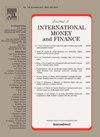基于媒体的气候风险与国际公司债券市场
IF 3.3
2区 经济学
Q2 BUSINESS, FINANCE
引用次数: 0
摘要
我们研究了2012年至2022年期间基于媒体的气候风险对国际公司债券市场的影响,并将其分为物理风险和转型风险两类。我们分析了以下几个方面:(i)市场发展(发达市场与新兴市场);(ii)信用质量(投资级与高收益债券),(iii)行业(气候敏感行业与非敏感行业),(iv)期限(短期债券与长期债券)。我们发现,转型风险在全球公司债券市场中有所体现,但在新兴公司债券市场中没有体现。此外,在全球公司债券市场上,转型风险仅对投资级债券产生实质性影响。行业分析表明,气候敏感行业和气候不敏感行业之间没有一致的显著差异。期限分析表明,转型风险反映在全球公司债券市场的短期和长期回报中,但这种影响在新兴市场不太明显。实物风险没有系统地反映在国际公司债券的回报中。子样本分析显示,2015年12月《巴黎协定》签署后,转型气候风险的重要性有所提高。本文章由计算机程序翻译,如有差异,请以英文原文为准。
Media-based climate risks and international corporate bond market
We examine the impact of the media-based climate risks, grouped into physical and transition risk categories, on the international corporate bond market in the period from 2012 to 2022. We analyze the following aspects: (i) market development (developed versus emerging markets); (ii) credit quality (investment grade versus high yield bonds), (iii) industry (climate-sensitive versus non-sensitive industries), and (iv) maturity (short versus long term bonds). We find that transition risk is reflected in the global corporate bond market, but not in the emerging corporate bond market segment. Furthermore, transition risk has a material impact only on the investment grade bonds in the global corporate bond market. The industry analysis reveals that there are no consistent significant differences between climate-sensitive and climate-insensitive industries. Maturity analysis indicates that transition risk is reflected in global corporate bond market returns for both short and long terms, but this effect is less pronounced in emerging markets. Physical risk is not systematically reflected in international corporate bond returns. The subsample analysis shows higher importance of transition climate risk following the Paris Agreement in December 2015.
求助全文
通过发布文献求助,成功后即可免费获取论文全文。
去求助
来源期刊

Journal of International Money and Finance
BUSINESS, FINANCE-
CiteScore
4.20
自引率
4.00%
发文量
141
期刊介绍:
Since its launch in 1982, Journal of International Money and Finance has built up a solid reputation as a high quality scholarly journal devoted to theoretical and empirical research in the fields of international monetary economics, international finance, and the rapidly developing overlap area between the two. Researchers in these areas, and financial market professionals too, pay attention to the articles that the journal publishes. Authors published in the journal are in the forefront of scholarly research on exchange rate behaviour, foreign exchange options, international capital markets, international monetary and fiscal policy, international transmission and related questions.
 求助内容:
求助内容: 应助结果提醒方式:
应助结果提醒方式:


